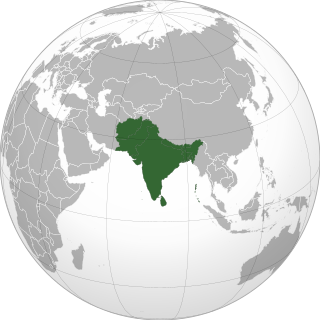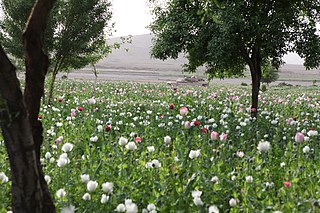Related Research Articles

The economy of Afghanistan is listed as the 124th largest in the world in terms of nominal gross domestic product (GDP), and 102nd largest in the world in terms of purchasing power parity (PPP). With a population of around 41 million people, Afghanistan's GDP (nominal) stands at $14.58 billion as of 2021, amounting to a GDP per capita of $363.7. Its annual exports exceed $2 billion, with agricultural, mineral and textile products accounting for 94% of total exports. The nation's total external debt is $1.4 billion as of 2022.

The South Asian Association for Regional Cooperation (SAARC) is the regional intergovernmental organization and geopolitical union of states in South Asia. Its member states are Afghanistan, Bangladesh, Bhutan, India, Maldives, Nepal, Pakistan, and Sri Lanka. SAARC comprises 3% of the world's land area, 21% of the world's population and 5.21% of the global economy, as of 2021.

The South Asian Free Trade Area (SAFTA) is a 2004 agreement that created a free-trade area of 1.6 billion people in Afghanistan, Bangladesh, Bhutan, India, the Maldives, Nepal, Pakistan and Sri Lanka with the vision of increasing economic cooperation and integration.

Afghanistan has long had a history of opium poppy cultivation and harvest. As of 2021, Afghanistan's harvest produces more than 90% of illicit heroin globally, and more than 95% of the European supply. More land is used for opium in Afghanistan than is used for coca cultivation in Latin America. The country has been the world's leading illicit drug producer since 2001. In 2007, 93% of the non-pharmaceutical-grade opiates on the world market originated in Afghanistan. By 2019 Afghanistan still produced about 84% of the world market. This amounts to an export value of about US $4 billion, with a quarter being earned by opium farmers and the rest going to district officials, insurgents, warlords, and drug traffickers. In the seven years (1994–2000) prior to a Taliban opium ban, the Afghan farmers' share of gross income from opium was divided among 200,000 families.

Relations between Afghanistan and modern Iran were officially established in 1935 during Kingdom's Zahir Shah's reign and the Pahlavi dynasty's Reza Shah Pahlavi, though ties between the two countries have existed for millennia. As a result, many Afghans speak Persian, as Dari is one of the official languages of Afghanistan, and many in Afghanistan also celebrate Nowruz, the Persian New Year.
The following lists events that happened during 1936 in Afghanistan.
The following lists events that happened during 1948 in Afghanistan.
The following lists events that happened during 1949 in Afghanistan.

Canada and New Zealand have a longstanding relationship fostered by a shared history and culture. The two countries are former British Dominions and have a common head of state in King Charles III. Both nations are members of the Asia-Pacific Economic Cooperation, Cairns Group, Commonwealth of Nations, Five Eyes, OECD and the United Nations.

Pakistan has bilateral and multilateral trade agreements with many nations and international organizations. It is a member of the World Trade Organization, part of the South Asian Free Trade Area agreement and the China–Pakistan Free Trade Agreement. Fluctuating world demand for its exports, domestic political uncertainty, and the impact of occasional droughts on its agricultural production have all contributed to variability in Pakistan's trade deficit. The trade deficit for the fiscal year 2013/14 is $7.743 billion, exports are $10.367 billion in July–November 2013 and imports are $18.110 billion.
United Nations Security Council Resolution 1817 was unanimously adopted on 11 June 2008.

The Good Country Index measures how much each of the 163 countries on the list contribute to the planet, and to the human species, through their policies and behaviors.

Cannabis is illegal in Afghanistan. It has been cultivated for centuries, and experienced relatively little interference until the 1970s, where after it became an issue both in international politics and in the finance of the series of wars which occurred in Afghanistan for forty years. In 2010, the United Nations reported that Afghanistan was the world's top cannabis producer.

The nations of Afghanistan and Mexico established diplomatic relations in 1961. Both nations are members of the United Nations and the World Trade Organization.
The Afghanistan–Pakistan Transit Trade Agreement is a bilateral trade agreement signed in 2010 by Pakistan and Afghanistan that calls for greater facilitation in the movement of goods amongst the two countries.
References
- ↑ "Top Products Exported By Afghanistan". TradeMap. Retrieved 11 September 2020.